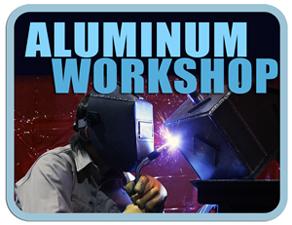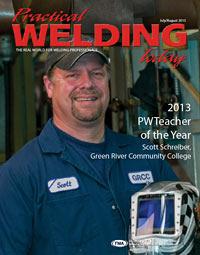President
- FMA
- The Fabricator
- FABTECH
- Canadian Metalworking
Categories
- Additive Manufacturing
- Aluminum Welding
- Arc Welding
- Assembly and Joining
- Automation and Robotics
- Bending and Forming
- Consumables
- Cutting and Weld Prep
- Electric Vehicles
- En Español
- Finishing
- Hydroforming
- Laser Cutting
- Laser Welding
- Machining
- Manufacturing Software
- Materials Handling
- Metals/Materials
- Oxyfuel Cutting
- Plasma Cutting
- Power Tools
- Punching and Other Holemaking
- Roll Forming
- Safety
- Sawing
- Shearing
- Shop Management
- Testing and Measuring
- Tube and Pipe Fabrication
- Tube and Pipe Production
- Waterjet Cutting
Industry Directory
Webcasts
Podcasts
FAB 40
Advertise
Subscribe
Account Login
Search
Aluminum Workshop: What’s so bad about welding 2024 vs 7075?
- By Frank Armao
- Updated August 8, 2023
- November 12, 2014
- Article
- Aluminum Welding
Q: You have discussed previously the fact that some aluminum alloys, such as 7075 and 2024, should not be welded. But I know a fabricator who occasionally welds 7075. Is he engaging in a poor practice, or is there something I don’t understand?
A: I can’t really answer your question definitively because I don’t know the specific application of the parts the fabricator is making. In the vast majority of , it is a very poor and possibly even dangerous practice to weld 7075 or 2024. The problem is that these two and similar alloys are extremely prone to microcracking, which is not always easily detectable and can lead to catastrophic failure while in service. For this reason, you will never find a recommended filler metal for welding 7075 or 2024 in any manufacturer’s literature.
However, there is one relatively common application in which 7075 is welded with no risk of dire consequences, and that is the repair of molds for injection or blow molding of plastics. Most of the thick plates that are used to make injection molds are made from either 7075 or 2618 in thicknesses from 3 to 18 inches. Such mold plates are sold by many manufacturers under proprietary names. Some are wrought plate and some are cast plate. Regardless of the supplier’s proprietary designation, they are almost always 7075 or 2618 or similar alloys.
In making molds for injection or blow molding, the negative portion of the part is machined into the mold plate. In doing so, the part is sometimes mismachined. To address this you must fill in this area with weld and remachine it. A similar technique is used to build up worn areas on molds. Why is this acceptable when I just got through saying that you shouldn’t weld 7075? The reason is that in this case, the weld isn’t structural and has very little stress. You can use gas tungsten arc welding (GTAW) or gas metal arc welding (GMAW) for the repair. You can use either 4043 or 5356 to make the repair, although 5356 is usually used on molds for textured parts. The reason is that 5356 is harder and machines more like 7075, so the texture looks more like the original mold plate.
Once you’ve completed the repair, just make sure you don’t get carried away with enthusiasm and weld lifting lugs onto the mold. That would be a very bad idea.
About the Author

Frank Armao
Aluminum Consulting Inc.
440-479-0239
About the Publication
Related Companies
subscribe now

The Welder, formerly known as Practical Welding Today, is a showcase of the real people who make the products we use and work with every day. This magazine has served the welding community in North America well for more than 20 years.
start your free subscription- Stay connected from anywhere

Easily access valuable industry resources now with full access to the digital edition of The Fabricator.

Easily access valuable industry resources now with full access to the digital edition of The Welder.

Easily access valuable industry resources now with full access to the digital edition of The Tube and Pipe Journal.
- Podcasting
- Podcast:
- The Fabricator Podcast
- Published:
- 04/16/2024
- Running Time:
- 63:29
In this episode of The Fabricator Podcast, Caleb Chamberlain, co-founder and CEO of OSH Cut, discusses his company’s...
- Trending Articles
Sheffield Forgemasters makes global leap in welding technology

ESAB unveils Texas facility renovation

Engine-driven welding machines include integrated air compressors

The impact of sine and square waves in aluminum AC welding, Part I

How welders can stay safe during grinding

- Industry Events
16th Annual Safety Conference
- April 30 - May 1, 2024
- Elgin,
Pipe and Tube Conference
- May 21 - 22, 2024
- Omaha, NE
World-Class Roll Forming Workshop
- June 5 - 6, 2024
- Louisville, KY
Advanced Laser Application Workshop
- June 25 - 27, 2024
- Novi, MI



























